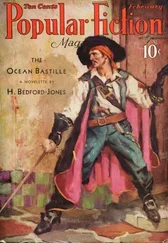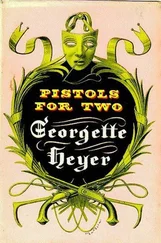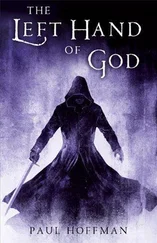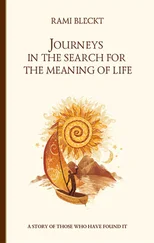It seemed that the man had been given the scarf by its creator, a plump, middle-aged woman, during the weeks before Christmas, though she had not told him her name. A search was promptly mounted for the mystery knitter.
But before she could be found, new Virgin sightings were reported: a weeping face chiseled into the weathered serpentine of a campus building; a sad, wizened countenance growing among the knots and twists of an old sycamore, its eyes dripping sap; a sobbing icon revealed in the whorls of ice that covered the lake. Indeed, Virgins seemed to be popping up everywhere, to such an extent that, according to rumor, representatives from the Vatican were on their way to confirm the miracles.
Before they could arrive, however, the scarf-knitter appeared and insisted that she had woven no Virgin Marys into the scarves she distributed to the region’s homeless over the holidays. The tears, she reasonably theorized, could easily have been melting beads of snow or ice. And as for the other sightings, she suggested, you could find Virgins anywhere, if you looked hard enough.
This seemed a cynical position to many, until a competing gallery of Jesus Christs was discovered and documented, and then a series of Moseses, and finally a suite of Donald Ducks. For some time now, townspeople have been reluctant to take anything at other than face value.
In college I knew a young man and woman, twin brother and sister, remarkable for their affinity: they were both slight, blond-haired and handsome; spoke with the same emphatic rhythm; walked with the same confident, long-legged stride; and liked the same music, food, art and film. They finished one another’s sentences and were adept at games of pantomime, during which it sometimes seemed each could read the other’s mind. The two were inseparable, and could occasionally be persuaded to tell the story of how their birth parents were killed in an auto accident, and how they came to be adopted by the dean of our college and his wife. They had been a campus fixture since their infancy, and were well known and loved by students, faculty and staff alike.
When they were about to graduate, the twins were gravely injured in their own auto accident. Though they survived, it was discovered in the hospital that not only were they not twins; they were not even related. Repeated blood tests confirmed this fact, and the story briefly became a national news item of the “strange but true” variety. After a few years, however, the story vanished, as did the twins.
Many years later I learned, from a mutual acquaintance, that the twins had married. They invited most of their closest friends to the wedding, but few came, or even responded to the invitation. According to my acquaintance, who did attend, the dean and his wife were not there either.
Though my acquaintance saw nothing morally wrong with the twins’ union, she reported that their first dance together after exchanging vows was a shocking sight, and one she would never forget. The twins danced face to face, holding each other with passionate intensity, the line between them like a mirror that reflected everything but their gender. No one joined them on the floor, for that dance or any other.
The twins send out a family newsletter every year, complete with photographs and news. They have adopted a number of children of various races and nationalities, but have had none of their own. There is no consensus among their former friends about whether this is due to some fertility problem, or if it represents a final taboo that not even the twins themselves dared break.
For many years a large table stood in the center of our dining room, blocking the most direct path from the living room to the kitchen and necessitating the development of an angled walking route that, over time, came to be visible as an area of wear in the dining-room rug. Recently we discarded the old rug and, since our children have grown and moved away and we now eat our meals in the kitchen, transferred our large table into storage. The dining room has been turned into a study, with bookshelves lining the walls and a narrow desk facing the front window.
Despite these changes, we find it nearly impossible to take the newly created direct path through the room, and continue to walk around the edge as if the table were still there. When occasionally one of us must enter the forbidden space, either to sweep the floor or to pick up a dropped item, we find that we wince in discomfort, as if anticipating a painful crash into the missing table.
Last summer, a bronze sculpture was stolen from the Square, a pedestrian mall at the center of our town. The sculpture, a full-scale rendition of a mother nursing her baby, had been bolted to a wooden bench that stands beneath a dogwood tree, and for some time had served as a lunch-hour companion to downtown office workers, a plaything for children and a symbol of our town’s perception of itself as an open, nurturing community. At least once a year the sculpture appeared in the local newspaper half-buried under snow, or covered with fall leaves, or basking in the dappled sunlight of spring.
Though it was quickly established that the theft had occurred between the hours of two and four on a weekday, no one reported having witnessed the crime, and the investigation quickly fizzled out. How the thief managed to remove the sculpture in broad daylight, when the Square was filled with people, remained a mystery to police.
A year passed, during which most townspeople grew accustomed to the sculpture’s absence, and many forgot about it entirely. Then, one recent morning, the sculpture reappeared. Police told the newspaper that they had narrowed the time of its reappearance to somewhere between nine and eleven, again when the Square was filled with pedestrians; and again no one claimed to have seen the thief. But no one could mistake the change that had been made to the sculpture: the baby, once chastely giving suck to the mother’s breast beneath a fold of her blouse, was now quite clearly portrayed as drinking its milk from a bottle.
Police interrogated everyone in the area who had access to a bronze-casting facility, but none would admit to having altered the sculpture or could offer any suggestion about who else might have done it. Several of the artists questioned did admit that they admired the chutzpah of the thief, despite their disapproval of his stunt. The mayor’s office quickly issued a statement supporting breast-feeding in general, and local mothers’ right to perform it in public. The original artist, now dead, has been honored with a commemorative postcard. And the police have declared that anyone with information about the crime should contact them immediately. Soon, however, the incident will be largely forgotten, and few will remember that the sculpture was ever different.
We took many photos on our summer trip to a popular vacation spot, and when we returned, we brought the film to a processor to have it developed. At home, looking over the photos, we realized that they belonged to someone else: a plump couple in their thirties with two small children. They too had gone on vacation, and could be seen engaging in various recreational activities, gamely smiling at the camera.
As we were putting the photos back in their envelope to return them to the processor, we noticed something familiar in one of them: a curving stretch of beach that ended in a distinctive craggy overhang. On closer examination, we realized that the photos had been taken in the same oceanside tourist town we had ourselves visited.
Читать дальше










